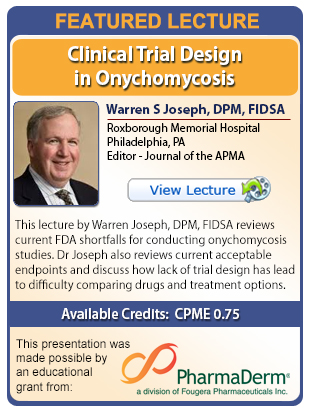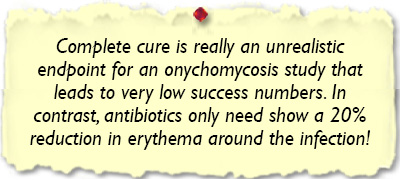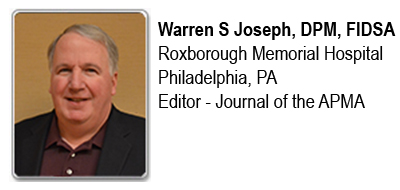|
|
|
|
Clinical Trial Design in Onychomycosis
|
|
|
|
|
The Food and Drug Administration sets very strict guidelines on how a clinical trial testing a new drug for onychomycosis must be performed. Every factor, from patient enrollment criteria to the length of the trial, how often and for how long a drug is applied and the necessary endpoints, are specifically negotiated between the company performing the study (the “Sponsor”) and the FDA (the “Agency”) before any work can begin. It is critical that the Sponsor gets this negotiation correct because they will be held to the parameters of the study when the package insert is negotiated and promotion of the drug begins. So, for example, if the minimal age of enrollment is 18, then the drug cannot be promoted for use in the pediatric population. Or, as another example, if only onychomycosis caused by the dermatophytes T. rubrum and T. mentagrophytes are included in the study, then the Sponsor will not be able to claim that drug is effective against other organisms that may cause the infection.

A look at some of the currently accepted criteria demonstrates how difficult it is to successfully perform an onychomycosis trial for a new topical agent:
-
The drugs must be applied daily and for 48 weeks. The patients are then observed for a further four weeks making the timeframe to evaluate the “primary endpoint” at 52 weeks, or a full year.
-
The primary endpoint is strictly defined for all onychomycosis studies. At the end of the trial the target nail, usually the hallux, must be “mycologically cured” – ie, both KOH and fungal culture negative and “clinically cured” – basically looking 100% perfect.
|
|
Complete cure is really an unrealistic endpoint that leads to very low numbers. Numbers in the single digits to mid-teens are not uncommon given how difficult it is to achieve. Compare this to a study on any new antibiotic now being performed under what is known by the Agency as the “acute bacterial skin and skin structure” Guidance for Industry. In order to get a new antibiotic approved, the Sponsor must show that at 48-72 hours, the erythema around the infection has been reduced by 20%...that’s all that’s necessary!
|
|
Because of the strict definition of “complete cure”, all Sponsors have instituted so called “secondary endpoints” that are a bit easier to achieve and can make the numbers look better. These tend to vary from study to study but most include “mycologic cure” and some variant of “almost clear” that may be defined as variously as mycologic cure with 5-10% remaining involvement. Although this almost clear endpoint may be satisfactory to both the patient and the prescribing doctor, the FDA pretty much considers it a “failure” in the trial since the primary endpoint was not reached.
Given the tremendous financial stakes to the Sponsors of promoting their newly released drug, there may be a tendency to try to compare one drug to another. Without the performance of a head-to-head clinical trial, it is actually against Federal law for a company or a rogue sales representative to speak to a prescribing physician about this. Although all trials adhere to the same basics spelled out above, there are always areas of difference. These can include the age of the enrolled patients, the percentage of nail involved, the amount of trimming allowed during the study, how the product is applied, actual differences in the pharmacokinetics of the drugs, etc. These factors may, or may not make any difference at all, but until a head-to-head trial is performed no comparisons can or should be made.
###
|
|
This ezine was supported by an educational grant from:
|
|
|




